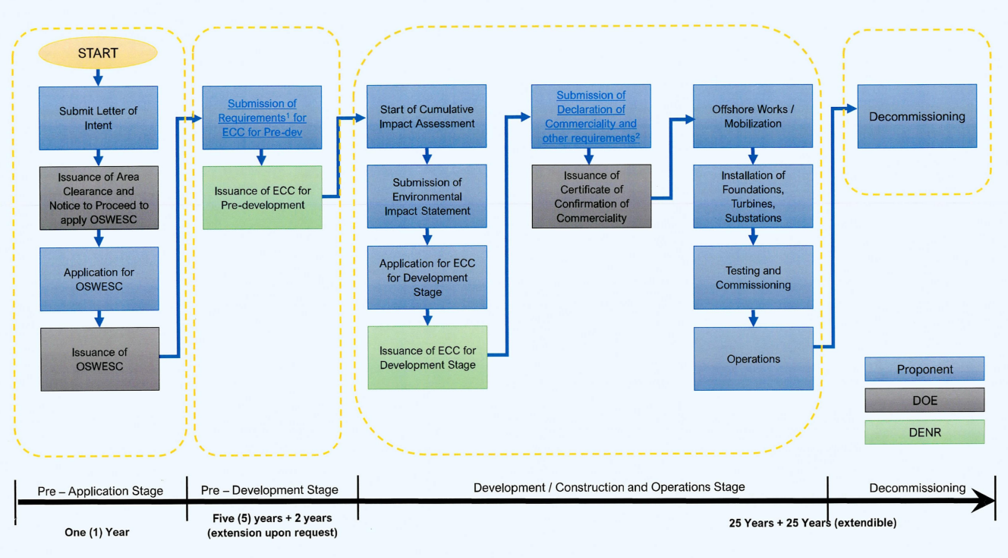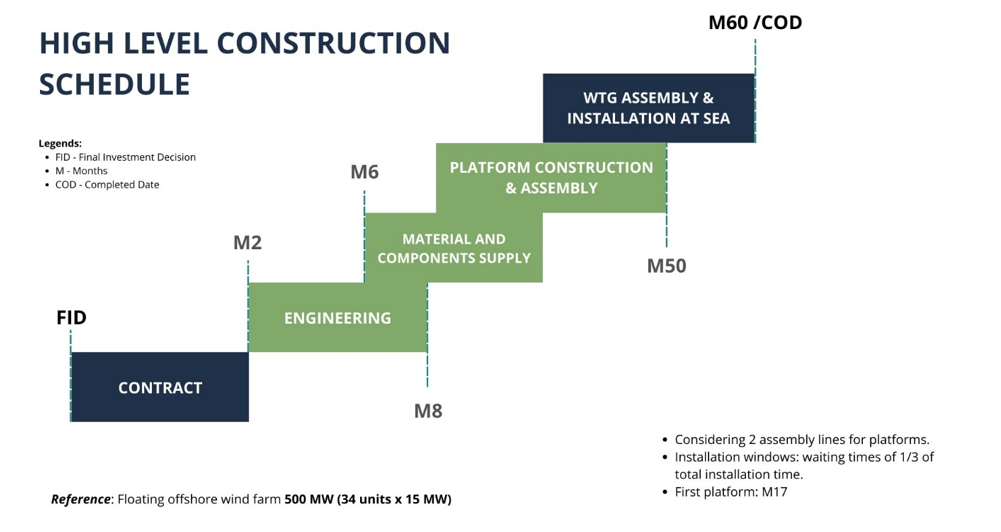Offshore wind energy, a renewable energy source generated from wind turbines installed on bodies of water, presents an opportunity for countries aiming to diversify their energy mix and reduce carbon emissions. Offshore wind is promising in the Philippines, with the country’s vast coastline and strong wind resources. According to the DOE Roadmap, the potential capacity for offshore wind in the Philippines stands at 178 gigawatts (GW), emphasizing the scale of this opportunity. Moreover, the Department of Energy (DOE) has awarded contracts for 82 offshore wind projects as of November 2023, demonstrating the government’s commitment to renewable energy.
The development of an offshore wind project typically follows a timeline spanning seven (7) to eleven years (11) or more. Throughout this process, various government agencies play critical roles, including the DOE, the Department of Environment and Natural Resources (DENR), and Local Government Units (LGUs).
The DENR released this overview of the procedural guidelines for offshore developers:


Even after securing a Final Investment Decision (FID), offshore wind projects in the Philippines may still take five to six years to come to fruition. This timeline includes steps like material and component supply, which often encounter logistical challenges, particularly in an archipelagic country like the Philippines. For instance, for a 500MW floating offshore wind project consisting of 34 units of 15MW turbines, the construction and assembly of platforms pose time constraints. To minimize delays and associated costs, developers should promptly initiate impact studies, Pre-FEED, and front-end engineering design (FEED) after project award. Collaboration with international consultants like Sener and FILDRAVO, who possess both global expertise and local knowledge, can further streamline the entire process from start to finish.


Offshore wind energy presents an opportunity for the Philippines to bolster its energy security, drive economic growth, and combat climate change. By navigating project development and leveraging expertise, the country can unlock its offshore wind resources for a sustainable energy future.
